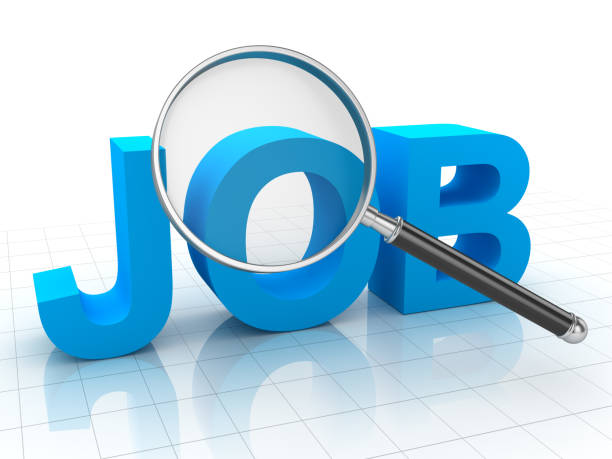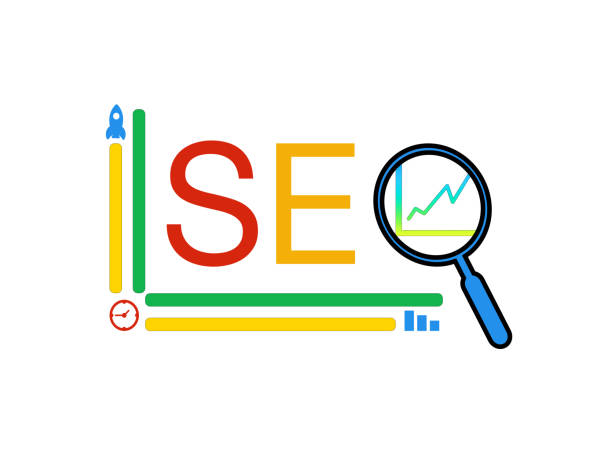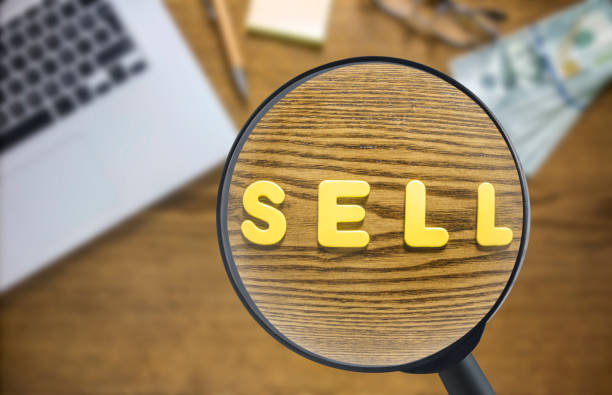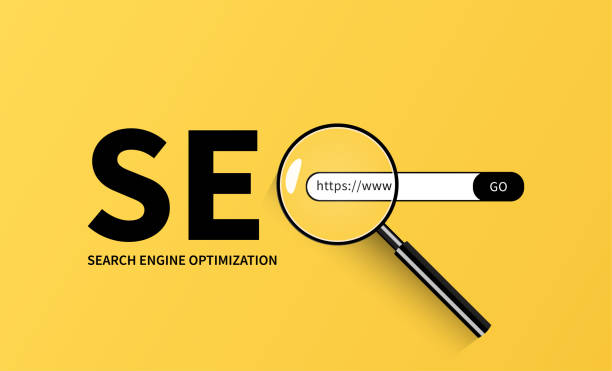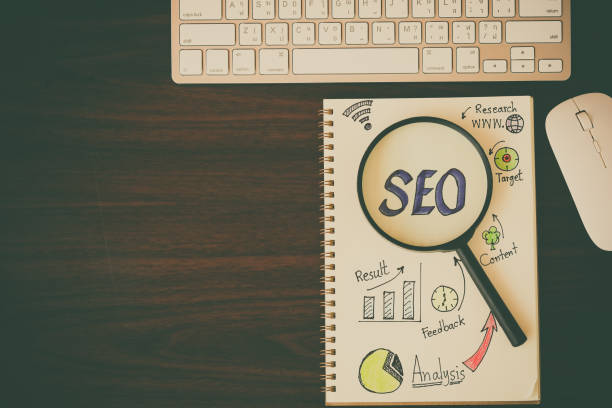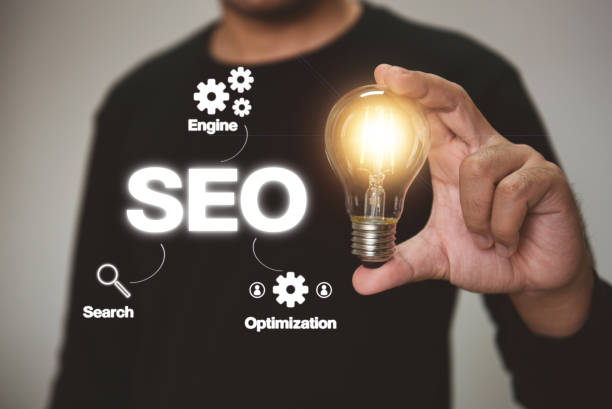Introduction to the Importance of On-page SEO and Its Functionality
In today’s highly competitive web world, simply having great content is not enough to be seen.
You need smart strategies that help search engines understand the value and relevance of your content.
One of the most important of these strategies is #On_page_SEO or on-page optimization.
On-page SEO is a process by which we optimize various elements of a web page to improve its ranking in search results and drive more organic traffic to the website.
This explanatory and educational section will help you gain a deeper understanding of the foundations of on-page SEO.
From keyword optimization to user experience improvement, every component plays a vital role in your overall success.
In fact, without a precise approach to on-page SEO, even the best content may get lost among a flood of information and never reach its target audience.
These optimizations include items such as URL structure, use of Heading tags, and image optimization, all of which help improve page ranking.
Tired of losing business opportunities due to not having a professional corporate website? Don’t worry anymore! With RasaWeb’s corporate website design services:
✅ Your brand’s credibility and professionalism will increase.
✅ You will attract more customers and sales leads.
⚡ Get a free consultation now to get started!
Keyword Research: The Master Key to Successful On-page SEO
Keyword research is the backbone of any on-page SEO campaign and is a crucial specialized and guidance section.
Before you even write a single word of content, you need to know what your audience is looking for and what phrases they use to search.
This process involves identifying words and phrases that users enter into search engines and that are relevant to your business, products, or services.
Choosing the right keywords for each page signals to search engines what your content is about and what questions it answers.
Using keyword research tools like Google Keyword Planner, Ahrefs, or Semrush can help you find keywords with high search volume and low competition.
Remember that long-tail keywords can also attract very targeted traffic, as users use them in the final stages of their sales funnel.
The ultimate goal is to produce content that precisely matches the user’s search intent.
For successful on-page optimization, focusing on appropriate and relevant keywords is of paramount importance.
Keywords should be used naturally in the text and other page elements.
Optimizing Title and Meta Descriptions to Attract Clicks
The Title Tag and Meta Description are the first impressions users have of your page in search results.
These two elements are among the most important factors in on-page SEO and form our educational and analytical section.
An attractive title and a compelling meta description can significantly increase your Click-Through Rate (CTR), even if you are not ranked higher than your competitors.
The page title should include the main keyword and be written in a way that is appealing to both search engines and users.
Its length should also be optimized to display fully in search results (usually between 50 and 60 characters).
The meta description should also provide an enticing summary of the page’s content and encourage users to click.
Including keywords, and of course a Call-to-Action, can be very effective. This section should not just be a list of keywords; rather, it should be a smooth and engaging text to encourage the user.
For effective optimization in on-page SEO, attention to these details is essential.
The table below provides some examples of titles and meta descriptions and their impact on on-page SEO:
| Type | Poor Example | Optimized Example | Impact Explanation |
|---|---|---|---|
| Page Title (Title Tag) | Our Products | Buy New Samsung Mobile Phone – Affordable and with Warranty | Optimized title includes main keywords and is attractive, increasing click-through rate. |
| Meta Description | We have many products here. | Latest Samsung phone models at the best prices with fast shipping. Shop today and enjoy special discounts! |
Optimized meta description provides a useful and attractive summary of the content, enticing the user to click, and includes a call to action. |
Optimized URL Structure and Quality Content: The Core Foundation of SEO
A clean, short, and descriptive URL (Uniform Resource Locator) structure not only helps users understand the page’s content but is also more comprehensible for search engines.
This is considered a key element in on-page SEO and includes our guidance and explanatory section.
Optimized URLs should include the page’s main keyword and avoid meaningless numbers and characters.
For example, instead of “www.example.com/page?id=123″, use “www.example.com/on-page-seo-optimization”.
This helps search engines better understand your website’s structure and topic.
Click here to preview your posts with PRO themes ››
In addition to the URL, content quality is more important than anything else.
Your content must be comprehensive, accurate, unique, and valuable to the user. Search engines are increasingly focusing on the value of content for the end-user.
Poor or duplicate content can harm your SEO ranking.
For optimization in on-page SEO, ensure that each piece of content answers user questions, provides useful information, and is well-organized.
Content length is also important; longer and more comprehensive content generally tends to rank better because it can cover a wider range of keywords and offer greater depth.
These optimizations play a significant role in improving your website’s visibility in search results.
Don’t have a corporate website yet and missing out on online opportunities? With professional corporate website design by RasaWeb,
✅ Double your business credibility
✅ Attract new customers
⚡ Free consultation for your corporate website!
Correct Use of Headings and HTML Tags for Readability
Proper use of Heading tags (H1, H2, H3, etc.) not only helps the readability of your content for users but also assists search engines in understanding the structure and importance of different sections of your page.
This is a vital aspect of on-page SEO and a specialized and educational topic. The H1 tag should be used only once per page and include the page’s main keyword, which is usually the page title itself.
This tag acts like the title of a book.
H2 tags are used for main sections and H3 tags for subsections, thereby creating a logical hierarchy.
In addition to headings, the use of other HTML tags such as <strong> (for highlighting), <em> (for emphasis) and bulleted lists (<li>) and numbered lists (<ol>) helps improve readability and user experience.
These tags also show search engines which parts of the content are more important.
Using them strategically and naturally, without excessive keyword stuffing, is key to success.
In the context of on-page SEO, proper content structuring using these tags helps search engines better index and rank your content.
This, in turn, significantly helps attract more targeted traffic to your website.
Image Optimization and Page Load Speed: Direct Impact on SEO
Images play a significant role in your website’s visual appeal and user experience, but if not properly optimized, they can severely reduce page load speed.
Image optimization is a critical component of on-page SEO and requires a guidance and analytical approach.
Page Load Speed is a key ranking factor for search engines like Google.
Users also expect pages to load quickly; otherwise, they will abandon the website.
To optimize images, first reduce their file size without a noticeable loss in quality.
Using modern image formats like WebP can also help reduce size.
Another important point is the use of Alt Text tags.
Alt Text is a text description of the image content that not only helps search engines understand the image but is also useful for visually impaired users.
This tag should include relevant keywords but should not be overstuffed.
Additionally, code compression (CSS, JavaScript), browser caching, and leveraging CDN (Content Delivery Network) are other measures that help improve page load speed.
All these on-page optimization actions strengthen your website’s signals to search engines that it provides an excellent user experience.
Internal and External Linking: The Communication Pillars of a Website
Linking, both internal and external, plays a pivotal role in on-page SEO.
This is a specialized and explanatory topic in website optimization.
Internal Links refer to pages within your own website and help search engines understand your site’s structure and discover important content.
They also distribute Authority (ranking power) throughout your site and help users easily navigate your site.
Using descriptive and relevant Anchor Text in internal links is crucial, as it tells search engines what the linked page is about.
Click here to preview your posts with PRO themes ››
External Links or Backlinks refer to pages on other websites.
While inbound backlinks to your site (from other sites to your site) are very important for SEO, outbound links (from your site to other sites) also play a role.
Linking to reputable and relevant sources can show Google that your content is well-researched and trustworthy, which in turn helps improve your credibility and ranking.
Always ensure that you link to high-quality and relevant sites and avoid linking to spammy or unreliable sites.
Link building optimization is an important part of on-page SEO strategies that helps search engines better understand the value and relevance of your content.
| Link Type | Purpose | Optimization Tips | Impact on On-page SEO |
|---|---|---|---|
| Internal Link | Directing users and bots to other site pages, distributing page authority | Using relevant anchor texts, linking to relevant and quality content, creating a content hub structure | Improved user navigation, increased dwell time, helping Google discover new pages, strengthening page credibility |
| External Link (Outbound) | Referring to authoritative sources, increasing content credibility, providing supplementary information | Linking to reputable and relevant sites (not competitors), using rel=”noopener” or rel=”sponsored” attributes as needed | Indicates content quality and credibility to Google, improves website trustworthiness |
User Experience and On-page SEO: A Close Relationship
Search engines, especially Google, are increasingly emphasizing User Experience (UX) as a ranking factor.
An excellent user experience not only keeps users on your site but also signals to search engines that your content is valuable and useful.
This deep connection between UX and on-page SEO creates intriguing and entertaining content. Did you know that even the smallest details in your website design can affect your SEO ranking?
Factors such as Usability, Responsive Design for mobile, and content readability all contribute to a better user experience.
A website that loads quickly, is easy to navigate, and has easily digestible content will likely have a lower Bounce Rate and experience a longer user Dwell Time.
These metrics show search engines that users are satisfied with your site.
To improve on-page SEO, you should always put yourself in the user’s shoes and ask: “Does this page meet my needs? Can I easily find the information I’m looking for?” User experience is an indirect but very powerful factor in on-page optimization that should not be overlooked.
Research shows that 80% of customers trust companies with professional websites more. Does your current website inspire this trust?
With RasaWeb’s corporate website design services, solve the problem of customer distrust and a weak online image forever!
✅ Create a professional image and increase customer trust
✅ Attract more sales leads and grow your business
⚡ Get a free consultation
Continuous Monitoring and Improvement of On-page SEO for Ranking Stability
The world of SEO is not static and is constantly changing.
Google’s algorithms are updated, competitors are active, and user behavior changes.
Therefore, continuous monitoring of on-page SEO performance and implementing ongoing improvements are essential for maintaining and enhancing your rankings.
This news and analytical section highlights the importance of this dynamism.
Using tools like Google Search Console and Google Analytics is crucial for monitoring keyword performance, organic traffic, click-through rates, and bounce rates.
These tools provide valuable insights into the strengths and weaknesses of your on-page SEO strategy.
Additionally, conducting periodic SEO Audits helps you identify and fix technical or content-related issues. From updating old content to improving internal link structure, there is always room for optimization.
By analyzing data and testing changes (such as A/B testing), you can optimize your on-page SEO strategy and ensure your website is always in the best position to compete.
Sustainability in SEO means a commitment to continuous learning and improvement.
Common Mistakes in On-page SEO and Practical Solutions
On the path to on-page SEO optimization, there are some common mistakes that can render your efforts fruitless.
Understanding these mistakes and knowing their solutions is crucial for any specialist and guide working in this field.
One of the most common mistakes is keyword stuffing. In the past, some webmasters tried to trick search engines by excessively repeating keywords.
However, modern Google algorithms have become much smarter and not only detect this behavior but also penalize the website.
The solution is to use keywords naturally and organically within the content.
Click here to preview your posts with PRO themes ››
Another mistake is ignoring page load speed or not being optimized for mobile. Given that a significant portion of searches are performed on mobile devices and users expect high speed, these two factors can severely harm your on-page SEO ranking.
Ensure your website is fully responsive and use tools to reduce load speed.
Low-quality content, inappropriate titles and meta descriptions, broken links, and incorrect use of Heading tags are other mistakes that can be avoided by following the tips learned in this article, thereby improving your on-page optimization.
Frequently Asked Questions
| No. | Question | Answer |
|---|---|---|
| 1 | What is On-Page SEO? | On-page SEO refers to a set of actions performed within a website (on its pages) to improve its ranking in search engine results. This includes optimizing content, site structure, and HTML codes. |
| 2 | Why is On-page SEO important? | On-page SEO helps search engines better understand page content and determine whether that page is relevant and valuable for user queries. This better understanding leads to higher rankings. |
| 3 | What is the first and most important step in On-page SEO? | Keyword Research is the most important initial step. By finding appropriate keywords, targeted content relevant to user needs can be produced. |
| 4 | What is the role of the Title Tag in On-page SEO? | The title tag is one of the most important ranking factors and should include the main keyword. This tag is displayed as the page title in search results and influences the Click-Through Rate (CTR). |
| 5 | What is the importance of Meta Description? | The meta description does not directly affect ranking, but by providing an attractive summary of the page’s content in search results, it can encourage users to click, thereby increasing the Click-Through Rate (CTR). |
| 6 | Why is the use of headings (H1, H2, etc.) important in content? | Headings help structure content and improve readability for users and search engine crawlers. Using keywords in headings also helps search engines better understand the topic. |
| 7 | What does Image Optimization in On-page SEO include? | It includes compressing images to reduce size, using descriptive and relevant file names, and filling the Alt tag (alternative text) with relevant keywords to help search engines understand the image content. |
| 8 | What is meant by Internal Linking in On-page SEO? | Internal linking refers to creating links between different pages of a website. This helps distribute page authority (Link Equity), improve user experience, and assist search engine crawlers in discovering new pages. |
| 9 | Why is Page Speed important for On-page SEO? | Page load speed is a direct ranking factor and significantly impacts user experience. Slow pages can lead to an increased Bounce Rate and reduced user engagement. |
| 10 | What role does quality content play in On-page SEO? | Quality, comprehensive, unique, and valuable content for the user, is the core of on-page SEO. This content not only attracts and retains users but also sends positive signals to search engines, leading to better rankings. |
And other services of RasaWeb Advertising Agency in the field of advertising
Smart Sales Automation: Professional optimization to increase sales using attractive user interface design.
Smart Conversion Rate Optimization: A professional solution for analyzing customer behavior with a focus on optimizing key pages.
Smart UI/UX: A professional solution to increase click-through rates by focusing on SEO-driven content strategy.
Smart UI/UX: A combination of creativity and technology to increase website traffic through Google Ads management.
Smart Custom Software: A combination of creativity and technology for analyzing customer behavior through key page optimization.
And over a hundred other services in the field of online advertising, advertising consulting, and organizational solutions
Online Advertising | Advertising Strategy | Advertorials
Sources
White Hat SEO Training and Techniques
How to write SEO-optimized content?
The role of internal linking in website SEO
Review of Key SEO Tools
? Ready to boost your business in the online space? RasaWeb Afarin Digital Marketing Agency paves your way to success by providing comprehensive solutions including professional website design, SEO, and content marketing.
📍 Tehran, Mirdamad Street, next to Bank Markazi, Southern Kazeroon Alley, Ramin Alley, No. 6


